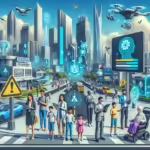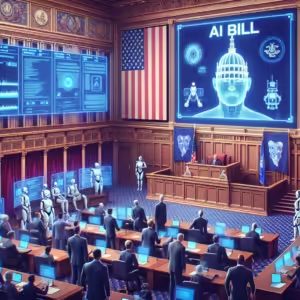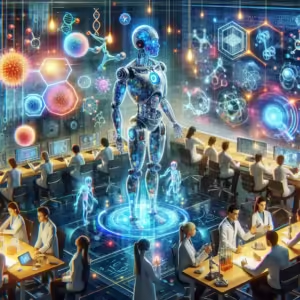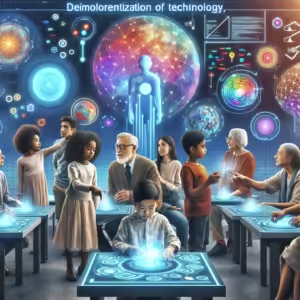Understanding the Rapid Rise of AI Adoption
In recent years, artificial intelligence has moved from a burgeoning technology to a revolutionary force propelling industries forward. Since the launch of ChatGPT, developed by OpenAI, businesses worldwide have significantly ramped up their AI adoption rates. This article explores the factors contributing to this rapid growth, the improvements achieved, potential risks, and how AI is reshaping various sectors.
The Catalyst for Change: ChatGPT’s Introduction
ChatGPT, a powerful language model by OpenAI, is hailed as a game-changer in the AI landscape. Its launch sparked an enormous shift towards embracing AI technologies, transforming how businesses operate and thrive. Some key reasons for this surge include:
– **Capability and Versatility:** ChatGPT can perform an array of tasks, from content generation to answering queries and conducting complex conversations, showcasing AI’s potential across multiple domains.
– **Accessibility and Cost Efficiency:** With user-friendly platforms and affordable pricing models, even small and medium enterprises (SMEs) can leverage AI, leveling the playing field.
– **Continuous Improvement:** Machine learning algorithms allow AI, like ChatGPT, to continually refine its capabilities, leading to an ever-enhancing user experience.
Driving Growth Through AI Innovations
Industries across the board are noticing significant growth due to AI innovations. The capacity to harness large datasets and derive actionable insights is reshaping:
Healthcare
– **Predictive Analysis:** AI-driven predictive analytics assists in early disease detection, potentially saving lives and reducing healthcare costs.
– **Robotic Surgeries:** Surgeons supported by AI technologies achieve more precision, resulting in fewer complications and faster recovery times.
– **Personalized Medicine:** Through data-driven insights, AI tailors treatments to individual patients, dramatically enhancing outcomes.
Finance
– **Fraud Detection:** Real-time data processing helps banks and financial institutions identify and mitigate fraudulent activities.
– **Algorithmic Trading:** AI algorithms analyze market trends and execute trades with unparalleled speed and accuracy, maximizing profits.
– **Customer Service:** Chatbots, powered by AI, handle customer inquiries efficiently, providing quick responses and improving satisfaction.
Retail and E-commerce
– **Inventory Management:** AI optimizes stock levels and reduces wastage by predicting demand trends.
– **Personalized Marketing:** Retailers use AI to customize marketing campaigns, ensuring that products reach their intended audience effectively.
– **Enhanced Shopping Experience:** AI-driven recommendation systems provide personalized product suggestions, enhancing customer engagement.
Mitigating Risks Associated with AI
While AI presents substantial opportunities, it also brings certain risks that businesses must address to maximize benefits. Some key considerations include:
– **Data Privacy:** With AI systems processing vast amounts of data, ensuring customer privacy and complying with regulations becomes critical.
– **Bias and Fairness:** AI models must be audited to ensure they’re free from biases that could lead to unfair treatment or discrimination.
– **Security Concerns:** As AI systems become more complex, safeguarding them from cyber threats is paramount to protect sensitive information.
Future Outlook: AI’s Transformative Potential
The future of AI seems bright, with research indicating continued exponential growth in adoption rates. As organizations explore the potential of AI, several areas promise to push the boundaries further:
– **Natural Language Processing (NLP):** Advances in NLP are expected to improve human-computer interactions, making systems like ChatGPT even more conversational and effective.
– **Autonomous Systems:** From self-driving cars to automated factories, the rise of autonomous AI systems will revolutionize how industries operate.
– **AI in Education:** AI-driven platforms will personalize learning experiences, catering to individual student needs and fostering inclusive education systems.
Conclusion
The post-ChatGPT era marks an inflection point in AI’s evolution, with adoption rates soaring and industries experiencing transformative growth. While the journey is promising, businesses must navigate potential risks with strategic foresight. By doing so, organizations can harness AI’s full potential, driving innovation, efficiency, and growth in an increasingly complex global landscape.
As we navigate this exciting path, one thing is certain: AI, starting with groundbreaking models like ChatGPT, is here to stay and will continue to redefine what’s possible in our world. Through smart and ethical adoption, we are positioned on the brink of unprecedented technological evolution.








